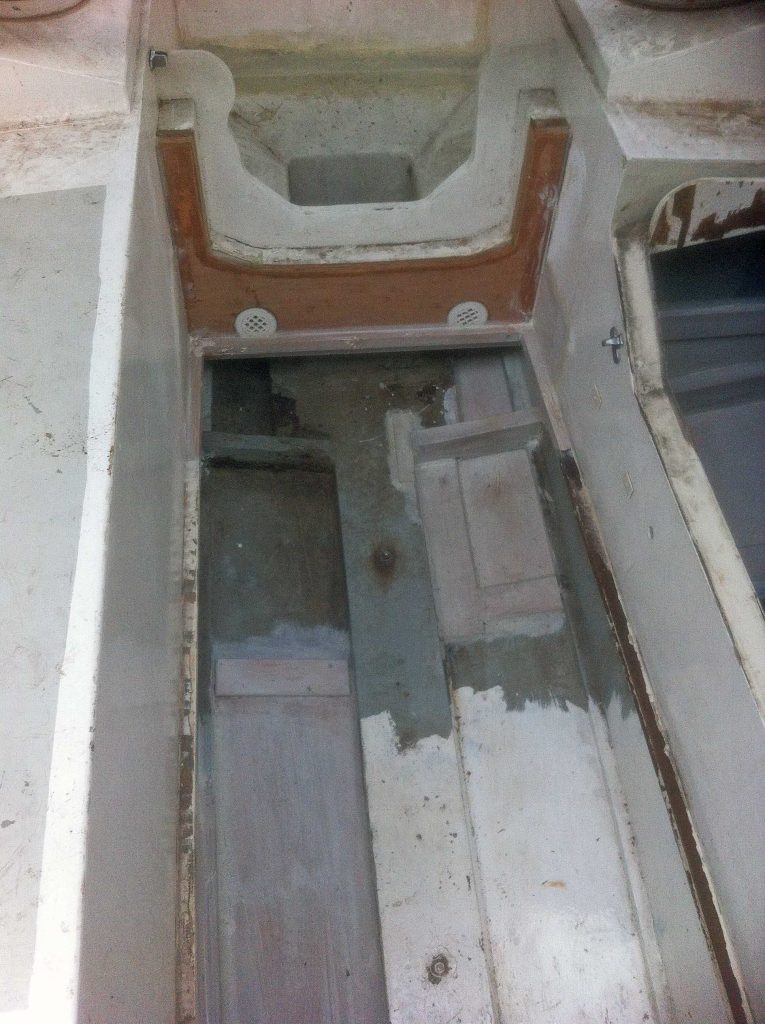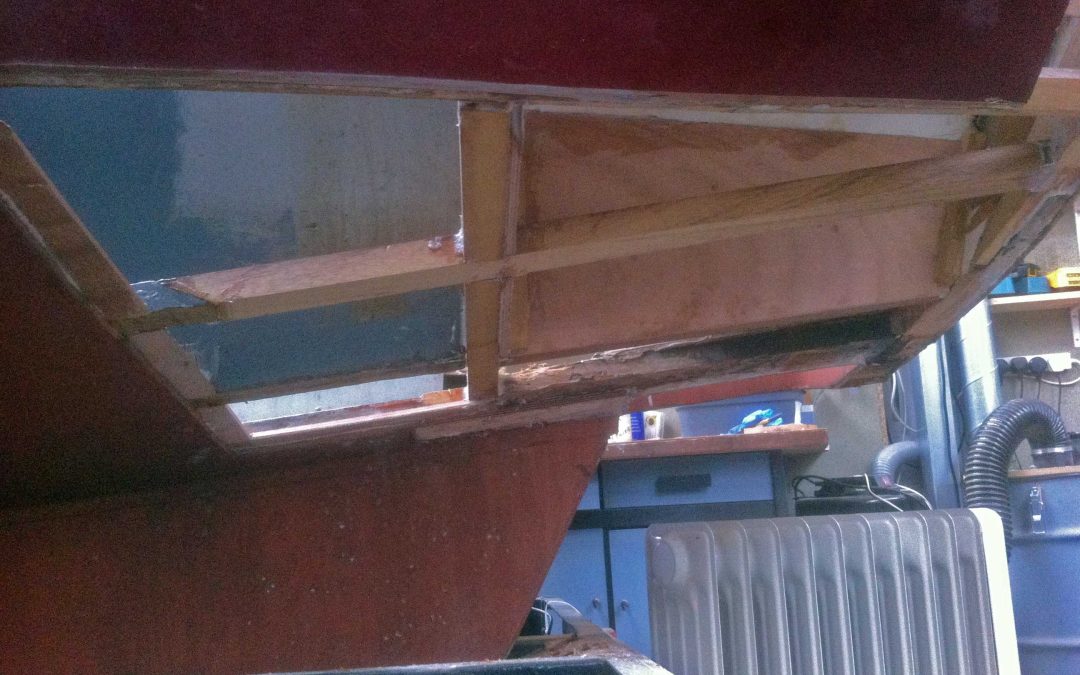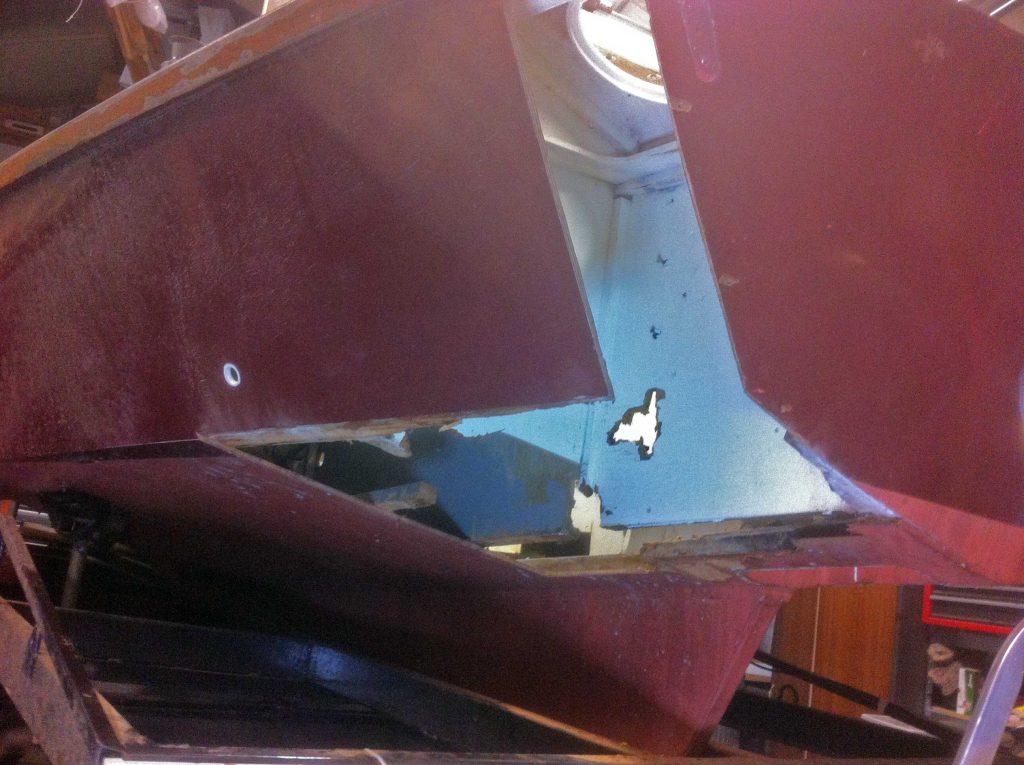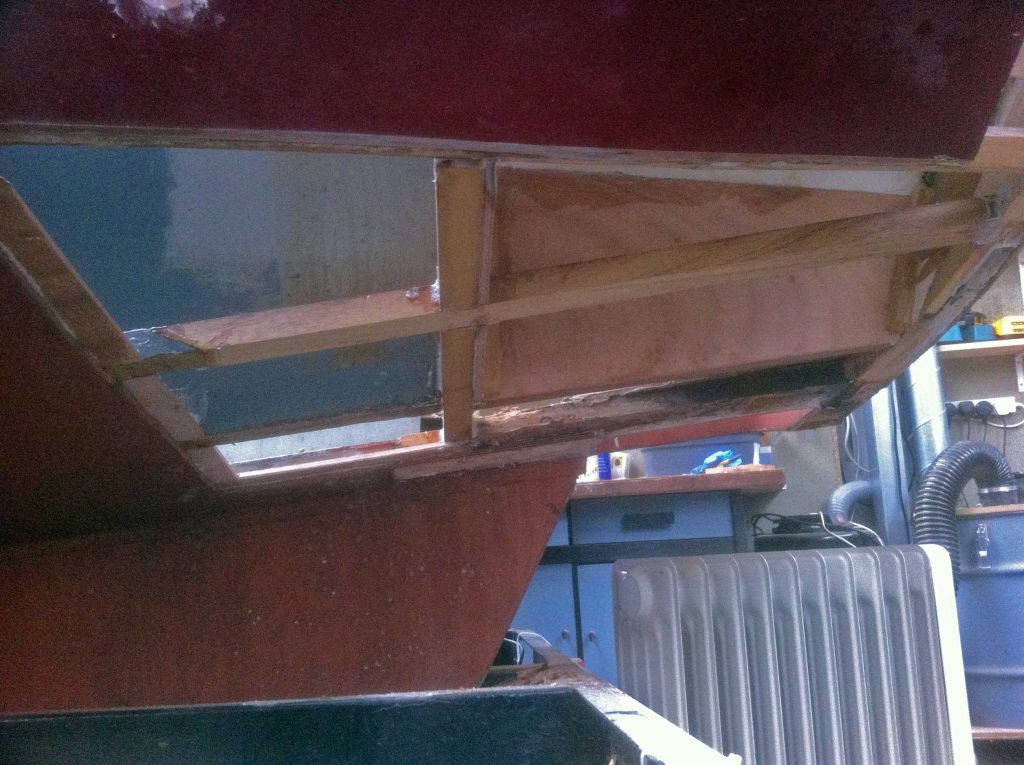Like many other technologies plywood production improved a huge amount during the second World War. As a result of this , the shortage of solid timber and rising labour costs, the 1950s and 1960s saw a boom in the design and building of plywood boats. As so often with novel materials the benefits of plywood were talked up and its weaknesses glossed over, The apparent ease with which it could be worked encouraged many untrained builder/owners to have a go.
Fortunately some very well thought out designs were developed by the likes of Robert Tucker (best known for his Silhouette and Caprice designs) many excellent little boats were built until for most purposes GRP took over. Plywood boats can be smart, functional and light but the material does have its snags; chief of these is the speed at which rot can take hold if construction and continuing maintenance are not meticulous.
The Matilda 20 is one of Robert Tucker’s later and more developed plywood cruiser designs with a lifting keel and a remarkable amount of room for a small boat. The one that came under my care had I think been home-built to a high standard but one small construction error and a minor lapse in maintenance left her almost beyond economical repair.
The drains in the cockpit had not been adequately bonded in place and there had been a small persistent leak around one of the fittings for the backstay.
The ply skin and all the underlying structure around the junction of the transom and hull on the port side had succumbed to dry rot.
Access to some areas was extremely tight and in places I had to rely on loose fitting joints bedded in epoxy structural filler.

Cockpit – looking aft with new skin in place, new cockpit drains and the aft end of the cockpit structure rebuilt.
Due to the extent of the rot and the difficult access the time and cost of the repair was curtailed by only carrying out a cosmetic finish in areas which should be seen with sound but less elegant techniques used in other areas.
The owner was pleased with the result – “Just wanted to say thank you for your fine efforts on “Matilda” It’s a really nice job and I much appreciate your workmanship, knowledge and skill. It was just what I wanted and you were absolutely professional in your estimate and assessment of my needs.”



